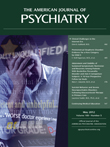There is increased recognition in clinical care and in research in psychiatry of the importance of religion and spirituality in our patients' lives (
1). In addition, these factors may be relevant to caring for disaster survivors by enhancing posttraumatic resilience through religious and spiritual belief, understanding, and support (pp. 105–122). This book is a symposium, sponsored by the APA Corresponding Committee on Religion, Spirituality and Psychiatry to inform DSM-5, with contributions by other scholars (
2). It recommends wording to improve the current DSM regarding “specific culture, age, and gender features” and “differential diagnosis” by including “the impact of religious/spiritual factors on phenomenology, differential diagnosis, course, outcome, and prognosis” (p. xviii) from early childhood through the end of life.
This is no easy topic. In the chapter titled “Mapping the Logical Geography of Delusion and Spiritual Experience,” K.W.M. Fulford and John Z. Sadler explain with clarity the partial role of conflicting worldviews in the relationship between psychiatry and religion:
The long-standing difficulties in the relationship between psychiatry and religion…come to a sharp focus in psychopathology. This is partly a matter of conflicting worldviews…. Psychiatry, as a discipline within scientific medicine, is at best uneasy with the received authority and revealed truths of religion. Conversely, many of those within religious and spiritual traditions are at best uneasy with the causal (hence deterministic) models of human experience and behavior that underpin the sciences basic to psychiatry. These conflicting worldviews, in turn, carry different and sometimes contrary implications for treatment. One man's miracle is another man's medication, as it were, and the burden of deciding between them is carried, from the perspective of psychiatry at least, by psychopathology.” (pp. 229–230)
While not primarily about conflicting worldviews, this book is an essential introduction to religious and spiritual issues as they relate to psychiatric diagnosis. Every resident and psychiatrist should be aware of these issues, demonstrate the clinical competency to address them, and receive continuing education in relevant topics pertaining to them. The close relationship to medical ethics is not a focus here. Psychiatric training and recertification will likely expand this core competency, informing clinical psychiatric practice.
In the chapter titled “Spirituality and Depression,” Dan G. Blazer moves from newer definitions of depression focusing on sociocultural contributions toward the increasing rates of depression, the loss of the experience of meaning in life, and the rising contemporary hopelessness. He explains that “the prevailing view among psychiatrists is that people with depression may express their symptoms in terms of religion (depression is an underlying disease, and religion is merely the idiom or vocabulary in which patients express their symptoms)” (p. 11). He recommends that since “spirituality has been thought to be a key to the amelioration of depressive symptoms in many faith traditions,….[t]he clinician should carefully explore the spiritual context from which depressive symptoms emerge, the meaning of the symptoms to the patient, and the complex interplay of traditional psychiatric therapies with the potentially aggravating or nurturing characteristics of the spirituality of the patient” (pp. 17, 18). As an example, in a chapter titled “Substance Use Disorders and Spirituality,” Marc Galanter and Linda Glickman write about the cultural factors involved in peyote rituals and the use of hallucinogens and raves, ayahuasca, ibogaine, cannabis, and betel nuts and make recommendations on how to recognize formal religious observances that may include ritualistic substance use in a controlled way, instead of identifying them as disorders. Of great interest are instruments to assess religion and spirituality, which are extending the empirical base. Among these are the Spiritual Involvement and Belief Scale, the Hood Mysticism Scale, the Spiritual Well-Being Scale, the Royal Free Interview for Religious and Spiritual Beliefs, the Hoge Intrinsic Religious Motivation Scale, and death anxiety scales.
While I disagreed with a few statements in the book (e.g., embracing mind-body dualism, probably deriving from Aristotle), that was rare. The divide between science and religion antedates the field of psychiatry and may be lessening. In Dan J. Stein's comment in the chapter by Gerit Glas, titled “Religious and Spiritual Issues in Anxiety and Adjustment Disorders,” he highlights, quoting from the German, that in the human sciences there is a “long-standing tension between theories and methods focusing on erklären (explanation) versus those focusing on verstehen (understanding), between approaching humans as objects that must be detailed and accounted for, in terms of underlying mechanisms, and as subjects that must be described and accounted for, in terms of what is meaningful to them” (p. 102).
The book concludes with an appeal by Fulford and Sadler, who recommend value-based medicine (distinct from the more economically driven “value-based” care of Michael Porter) to complement evidence-based medicine. They view individual value judgments as integral to clinical judgment and illustrate this with examples of how differentiating between delusion and spiritual experience can vary based on clinical judgment. They seek to amend nosology using linguistic analysis of the levels and personal meanings of diagnostic concepts in order “to reinforce the nature of psychiatry as a discipline that is essentially person centered” (p. 253). They recommend the inclusion of philosophers in research grants on nosology in order to advance “higher-level psychopathological concepts” through philosophical fieldwork that may further clarify their meaning and (improve) the processes of psychiatric diagnosis, “appropriately in the particular circumstances presented by each individual person” (p. 253).

